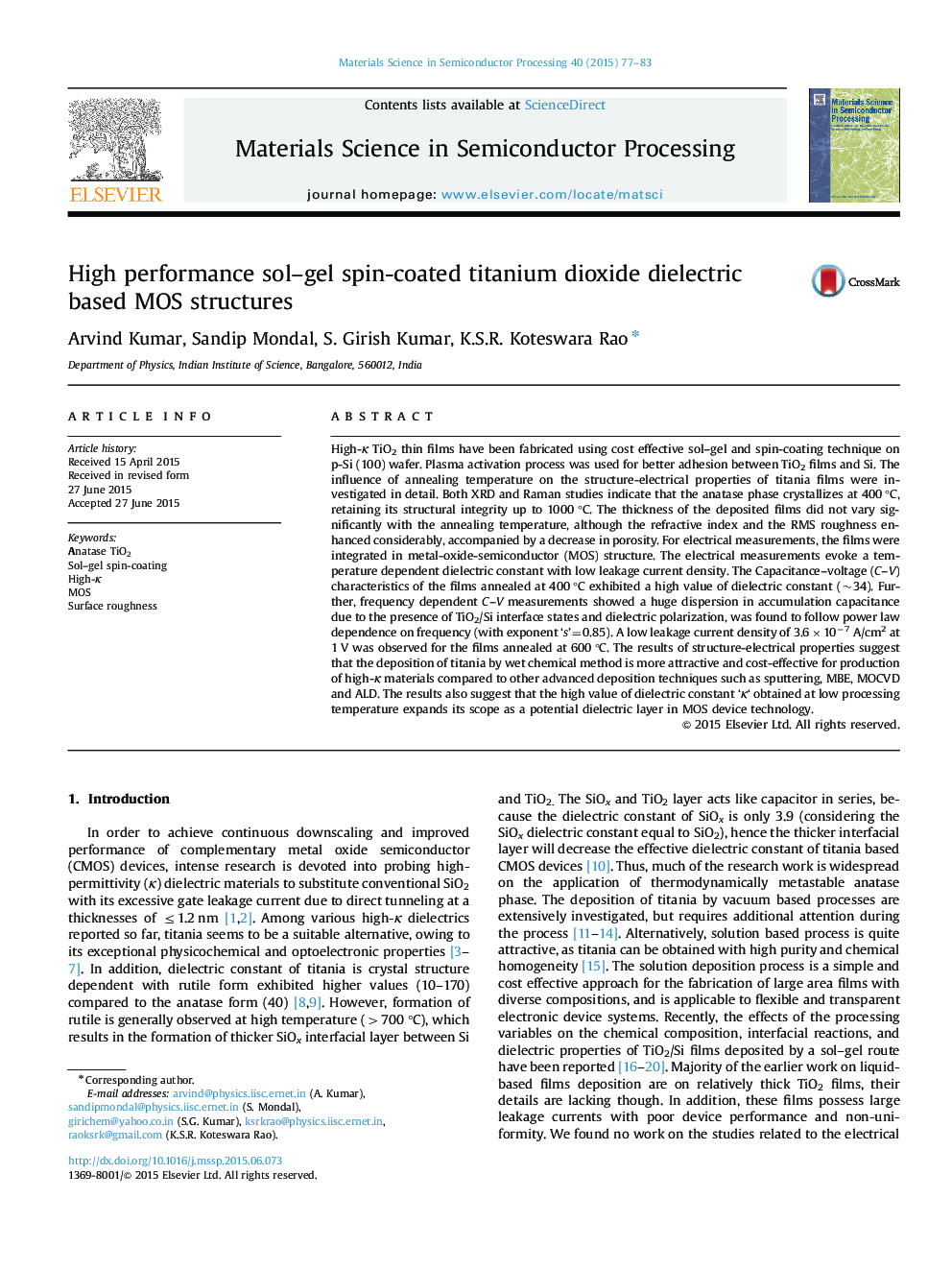| Article ID | Journal | Published Year | Pages | File Type |
|---|---|---|---|---|
| 7118638 | Materials Science in Semiconductor Processing | 2015 | 7 Pages |
Abstract
High-κ TiO2 thin films have been fabricated using cost effective sol-gel and spin-coating technique on p-Si (100) wafer. Plasma activation process was used for better adhesion between TiO2 films and Si. The influence of annealing temperature on the structure-electrical properties of titania films were investigated in detail. Both XRD and Raman studies indicate that the anatase phase crystallizes at 400 °C, retaining its structural integrity up to 1000 °C. The thickness of the deposited films did not vary significantly with the annealing temperature, although the refractive index and the RMS roughness enhanced considerably, accompanied by a decrease in porosity. For electrical measurements, the films were integrated in metal-oxide-semiconductor (MOS) structure. The electrical measurements evoke a temperature dependent dielectric constant with low leakage current density. The Capacitance-voltage (C-V) characteristics of the films annealed at 400 °C exhibited a high value of dielectric constant (~34). Further, frequency dependent C-V measurements showed a huge dispersion in accumulation capacitance due to the presence of TiO2/Si interface states and dielectric polarization, was found to follow power law dependence on frequency (with exponent 's'=0.85). A low leakage current density of 3.6Ã10â7 A/cm2 at 1 V was observed for the films annealed at 600 °C. The results of structure-electrical properties suggest that the deposition of titania by wet chemical method is more attractive and cost-effective for production of high-κ materials compared to other advanced deposition techniques such as sputtering, MBE, MOCVD and ALD. The results also suggest that the high value of dielectric constant 'κ' obtained at low processing temperature expands its scope as a potential dielectric layer in MOS device technology.
Related Topics
Physical Sciences and Engineering
Engineering
Electrical and Electronic Engineering
Authors
Arvind Kumar, Sandip Mondal, S. Girish Kumar, K.S.R. Koteswara Rao,
